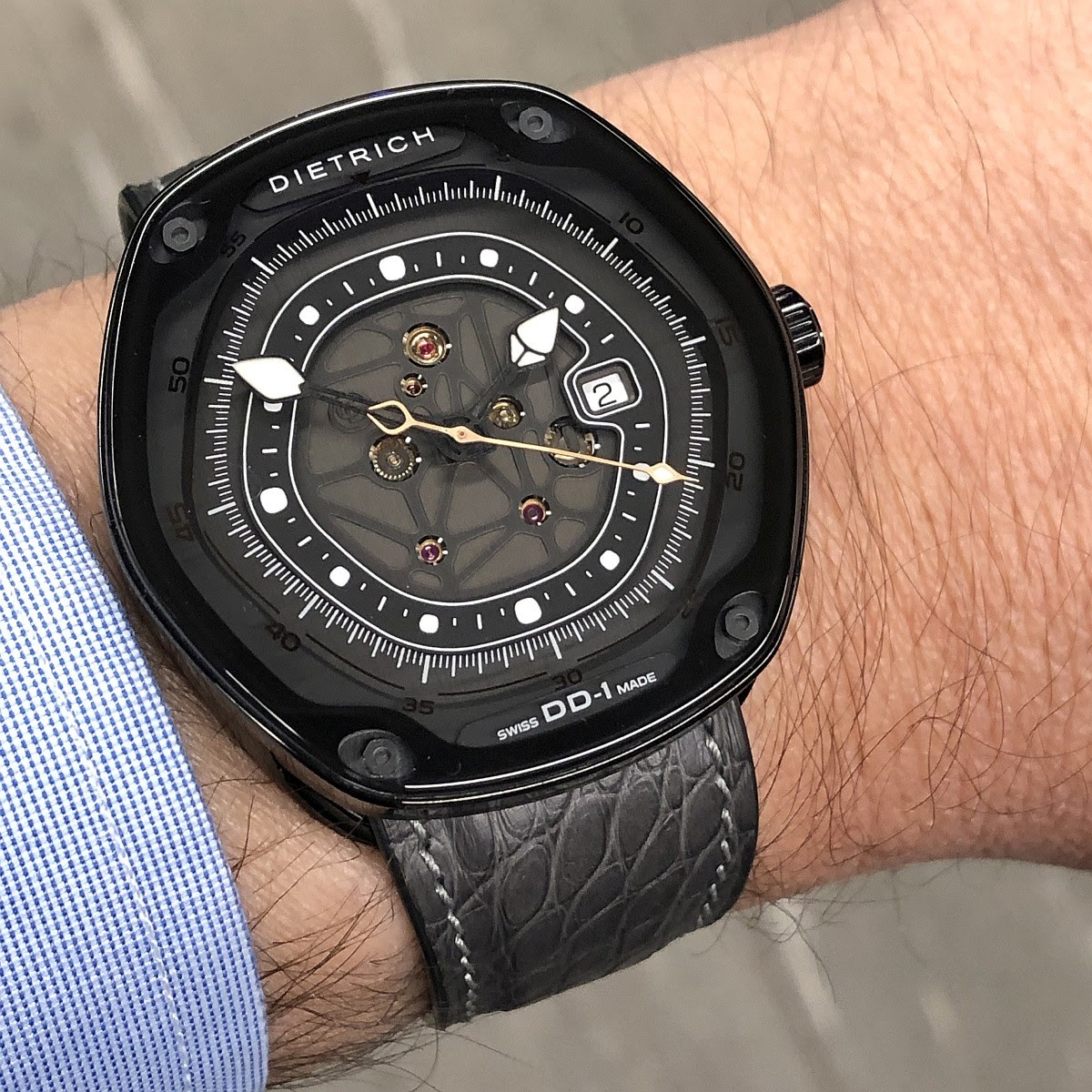
Hands on review of the Dietrich DD-1 (Dietrich Device n°1)
foversta


Step by step, Emmanuel Dietrich is winning his bet, which consists in building a coherent brand with a recognizable identity. The Organic Time presented in 2014 had laid the foundations and surprised by its audacity, the Time Companion in 2017 had placed the brand on a Swiss made basis and the trajectory continues with the launch of the Dietrich Device in December 2019. I could also mention the Perception which is the top-of-the-range model but its price places it in a different dimension. That said, its aesthetic approach ensures a link with the other models in the collection. In any case, the latest Dietrich Device provides a kind of synthesis between the Organic Time and the Time Companion, starting from a concept similar to one and using the quality criteria of the other. This is the reason why it is included in the catalogue to replace the Organic Time which has already left it.
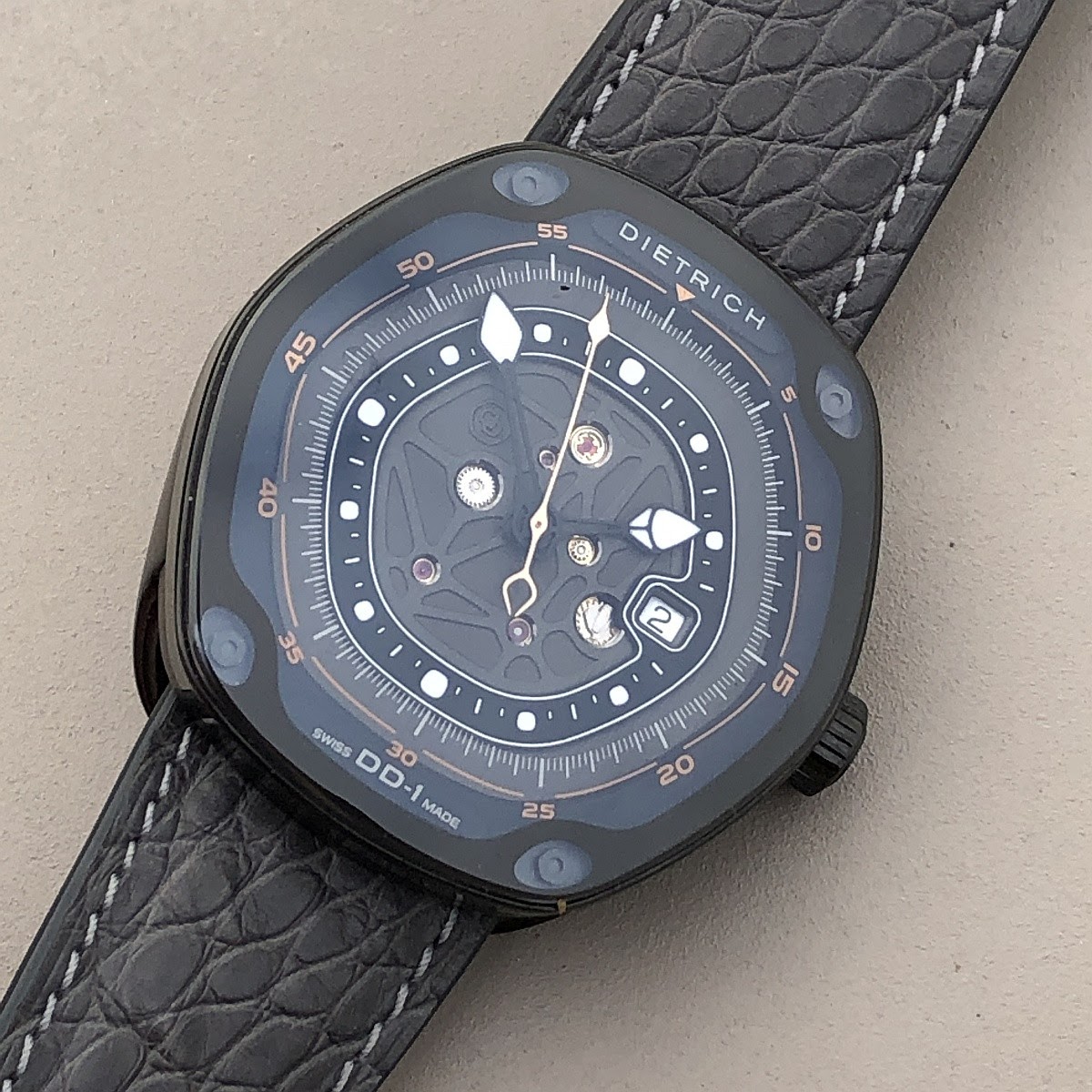
What I really like about Emmanuel Dietrich is that he designs committed watches with a real bias. They are not designed to please everyone and consensus is certainly not the goal. Emmanuel Dietrich expresses his ideas, plays with shapes and ensures that his watches are easy to live with for their owners. Dietrich Device No. 1 (DD-1) is clearly in line with this approach. The hexagon is obviously the keystone of the DD-1 as it is with the other models. I also find the ingenious quick strap change system of Organic Time with which you just have to slide the strap under the case. In fact, the DD-1 is immediately reminiscent of the Organic Time. The shape of the case (but slightly smaller and thinner than that of the OT) is the same, the base of the case which integrates the lugs is the same, the concept of double graduation of the dial is the same, I find again an identical shape of the main hands... and yet the DD-1 is radically different from the OT!
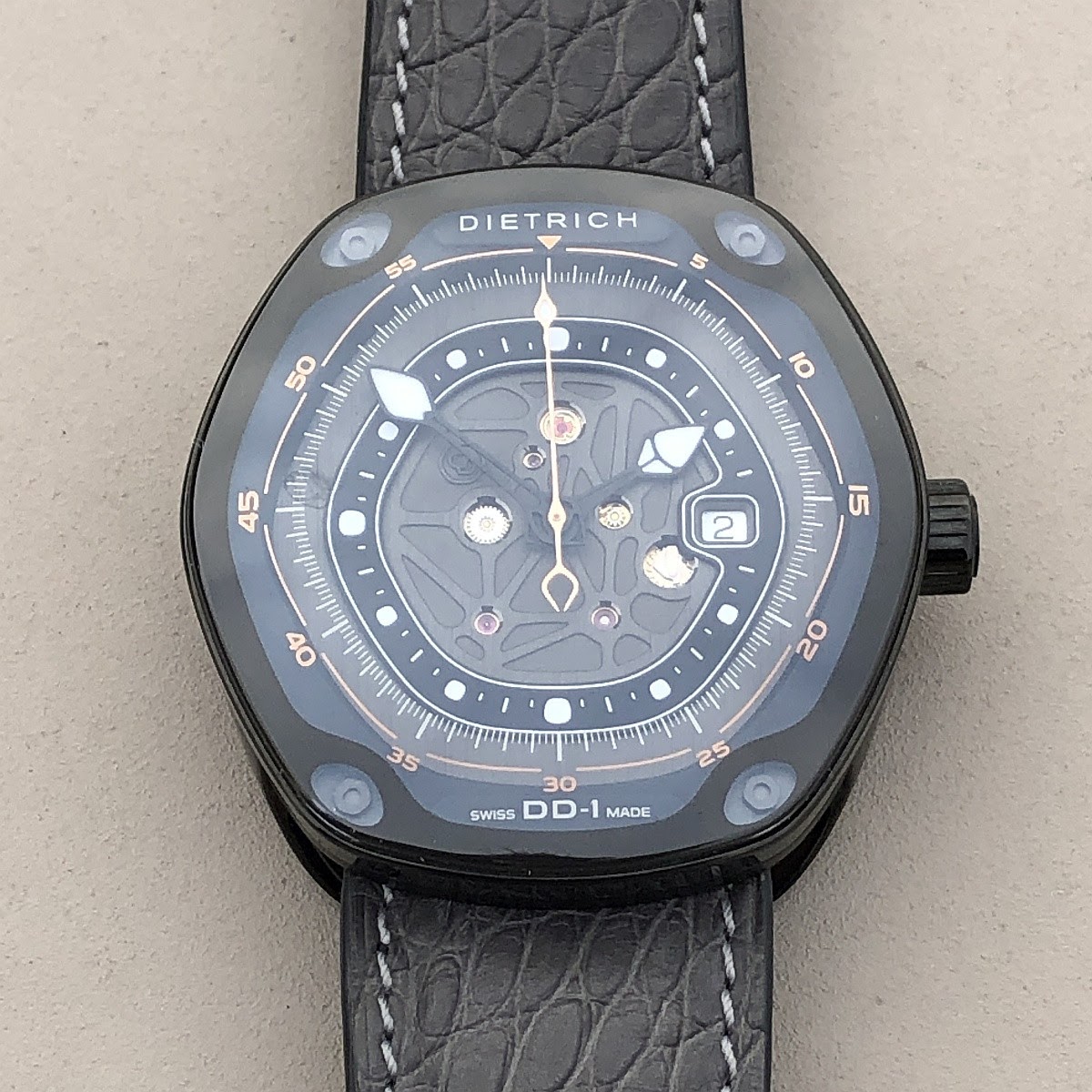
Aesthetic differences are found on two levels beyond the more contained size. The OT played with an open dial to allow the moving parts (small second hand and 24-hour display) to create relief and animation effects, the DD-1 on the other hand offers a solid dial. The OT had a thick bezel that highlighted the hexagonal shape, the DD-1 made it disappear to leave the first role to a double-sided anti-reflective sapphire crystal that covers almost the entire surface including the famous bezel screws. These two changes totally transform the watch and make it change its universe. The OT was bold and in some ways confusing, the DD-1 is more subtle and refined. But it remains original and surprising!
Despite the solid dial, the depth effects remain present. They are no longer the same. The trick was to position the second graduation under the glass. It thus appears in the foreground, just above the second hand. Then come the main hands whose ends are covered with luminescent material. The quality of the hands finishes is significantly improved compared to the OT hands. The surprise comes in any case from the shape of the stepped second hand, which allows it to "lick" the glass. Finally, the dial is positioned in the background with its minute scale, which includes the date window and stylized ribs in its centre to create a link with the organic atmosphere. Small openings on the jewels, the incabloc and some elements of the movement exist but they are very discreet.
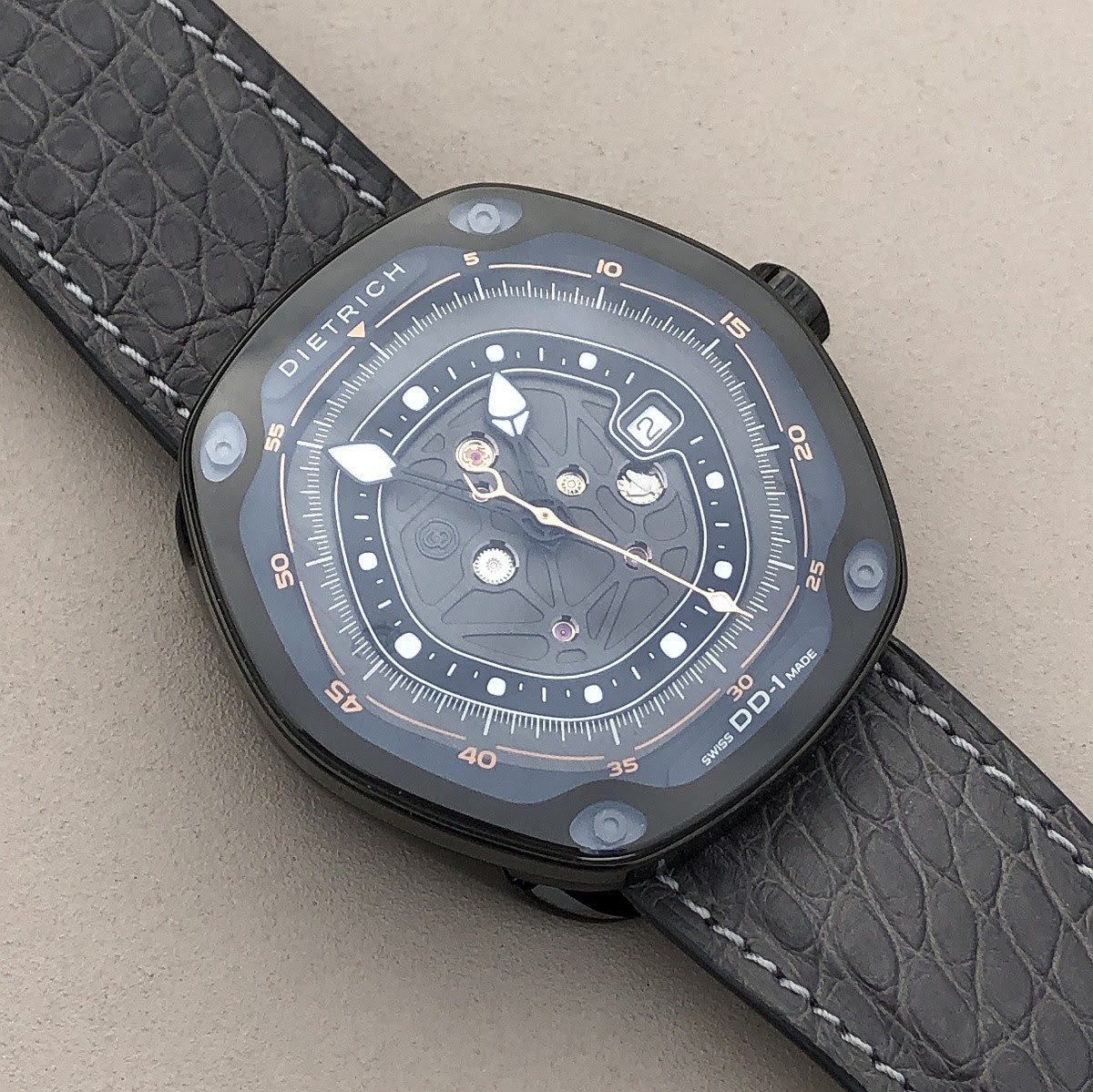
There is a counterpart to this aesthetic success based on a three-dimensional approach: the case has practically the same thickness than the OT's, which gives it a more compact style. Nothing to worry about either, the 13mm thickness can be supported very well and it gives presence to the wrist. But the DD-1 is clearly not for lovers of thin watches!
Despite its smaller size compared to the OT, the dimensions of the steel case remain large with a width of 45mm and a length of 46mm. This might seem impossible for a watch that is intended to be more elegant, but Emmanuel Dietrich has been able to play with colours. The general atmosphere is monochrome and dark (black PVD for the case, anthracite grey for the dial) and only the hour-markers, the date window and the ends of the hands provide contrast. The result is immediate: the perceived size is reduced. This monochrome rendering is in any case welcome to support this more qualitative objective. On the other hand, the watch loses some of the fun and energy that came out of the OT. The atmosphere of the DD-1 is more peaceful and certainly more serious.
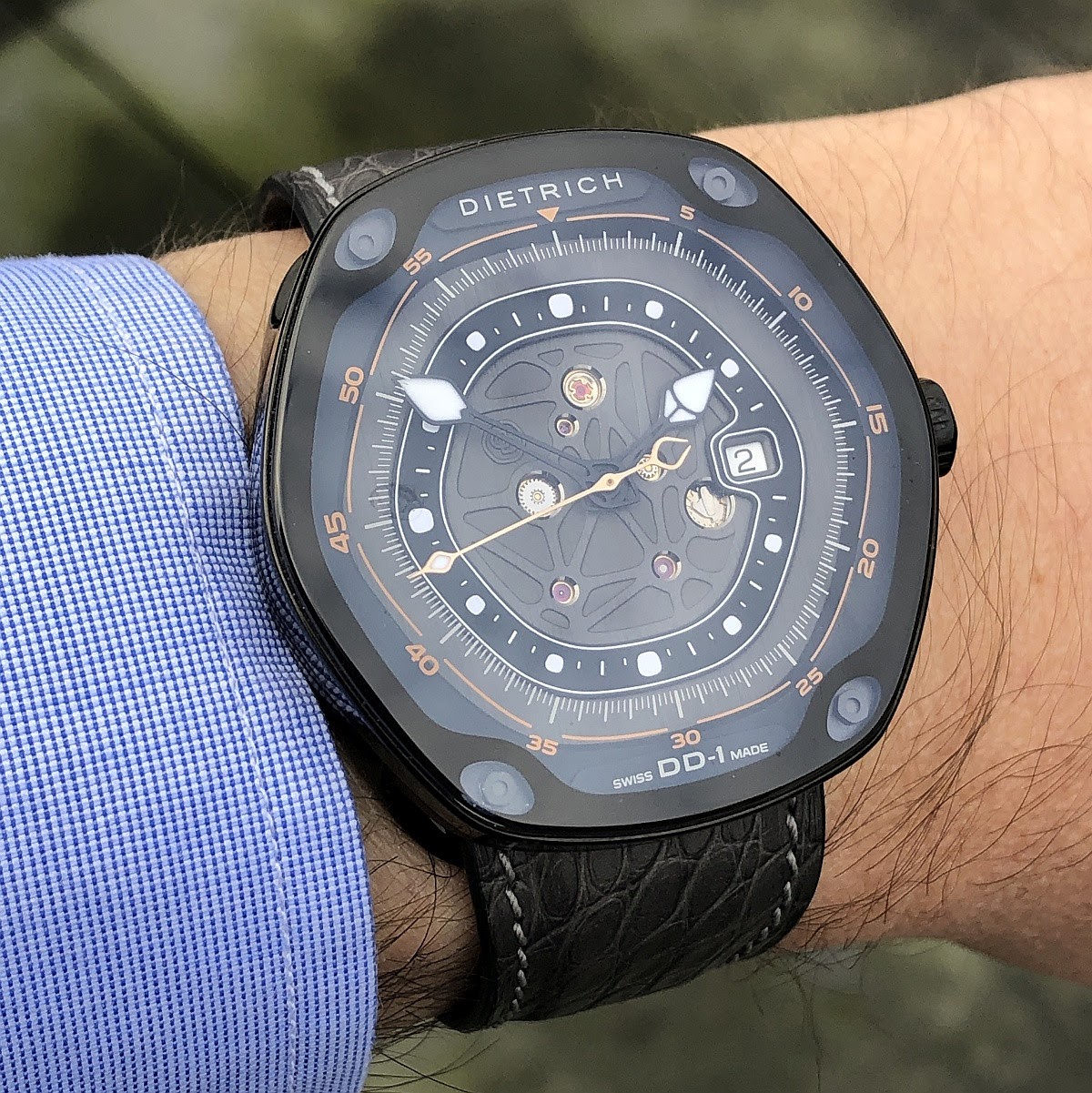
In any case, the larger gap between the OT and the DD-1 is not apparent at first glance. But it is inevitably perceptible in the end. I am of course talking about the quality of the execution. On this point, the DD-1 is based on the Time Companion. The finish of the case is impeccable and it is also very pleasant to touch. The dial and hands are manufactured with precision and sharpness and the crocodile strap that was supplied with the watch I tested was soft and very pleasant. But above all, the motorization has been changed. The Miyota calibre was removed and replaced by an ETA2824-2 calibre with a frequency of 4hz and a power reserve of about forty hours (a little short by today's standards of movements). So, certainly, the Miyota caliber was doing its job very well with the OT. However, the use of the ETA calibre is a real plus in terms of image and ensures a more homogeneous behaviour between the different produced watches. This calibre is not visible since the caseback is solid and in any case, it would have been hidden by the strap.
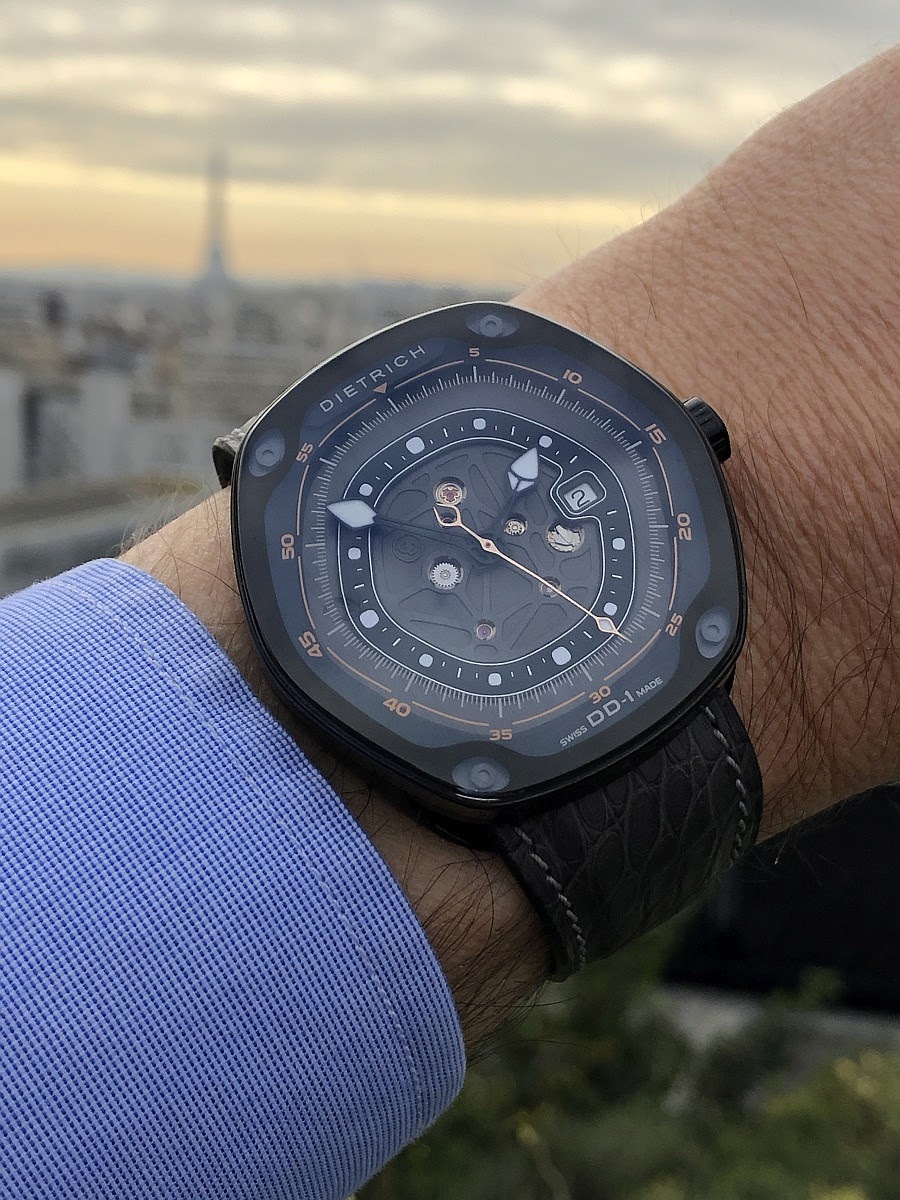
The strap fastening system is really well designed. The strap effectively follows the wrist and holds the watch firmly in place. On the other hand, it is advisable to start by putting the watch over a bed... it takes a little practice to close the bracelet without risk!
The DD-1 is sold at a price of 1,850 Swiss francs excluding tax, what is reasonable considering the quality of the watch and its uniqueness. Comfortable, surprising without being too daring, much more subtle than OT, the DD-1 is the result of a mature approach from Emmanuel Dietrich. As its name suggests it, it is the foundation stone of a whole collection of watches that will carry different complications. Perhaps this is where the transition to Swiss Made finds its main interest. Beyond the quality aspect, the Swiss Made label opens up a wide range of possibilities, which can only delight a designer like Emmanuel Dietrich.

Pros:
+ the quality of the execution considering the price
+ an aesthetic success, both original and subtle
+ the bracelet changing system
+ the comfort on the wrist
Cons:
- the power reserve of the movement, too short by current standards
- a case which is a little too thick
+ the quality of the execution considering the price
+ an aesthetic success, both original and subtle
+ the bracelet changing system
+ the comfort on the wrist
Cons:
- the power reserve of the movement, too short by current standards
- a case which is a little too thick
Fr.Xavier
Comments:

sebks December 8th, 2019-06:58
Very daring ! love it! It truly is the digital age mechanical watch: this is what the AP Code 11.59 should have looked like. Imagine this bold design combined with the AP finishing!

foversta December 8th, 2019-14:37
I think you are making a very fair comment! Thanks !
0-10-2
Load More Comments
Next Article
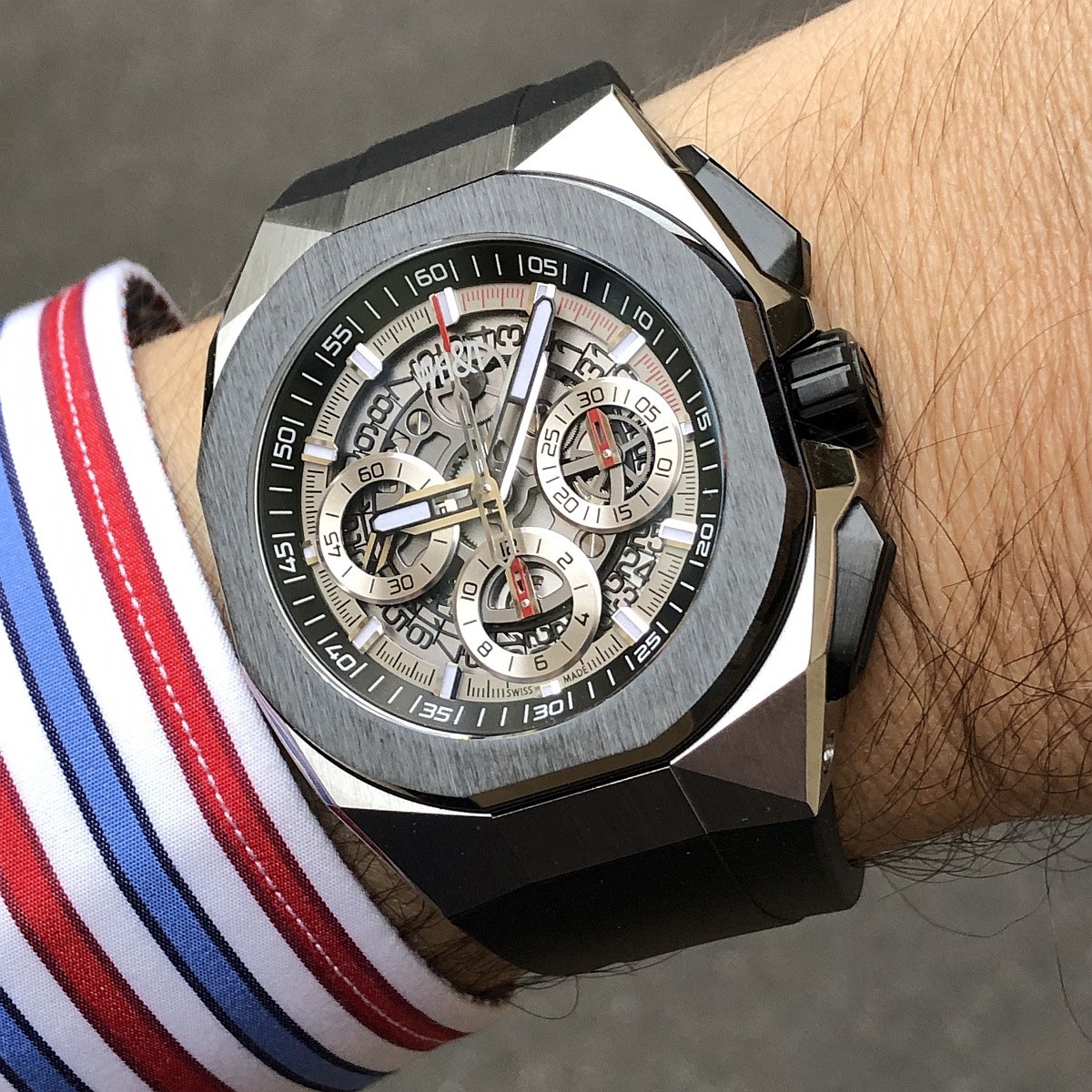
foversta


Hands on review of the WH&T LCF888 Chronograph
foversta


There are many ways to glimpse originality in the small world of watchmaking. We can discover a watch with a surprising design. Or with a delirious atmosphere. Or with an unexpected inspiration.
© 2017 - WatchProZine